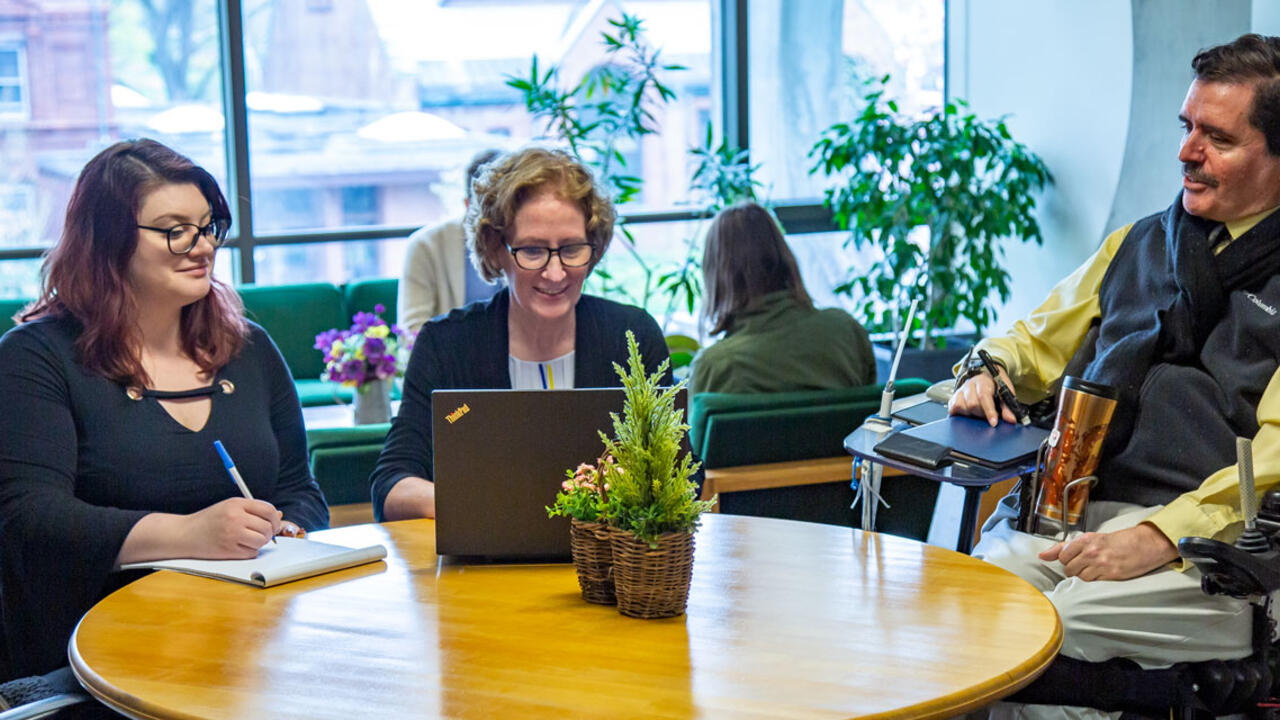Wellesley Revamps Accessibility and Disability Services

Wellesley College students who visit the third floor of Clapp Library will notice a new name next door to the Pforzheimer Learning and Teaching Center: Accessibility and Disability Resources (ADR). Previously known as the Office of Disability Services, the name change, announced in March, is just one element in a yearlong effort to update accessibility resources and services for students, faculty, and staff. Others include facilities upgrades, new software, additional staff, and a renewed mission that focuses on a highly personal approach to students who need resources and support.
Over the past year, an external review committee identified ways the College could accommodate the growing and changing needs of Wellesley students. “Next to student safety on campus, accessibility is our primary concern, and we focus on embracing, engaging, and empowering students as they strive for academic and personal success,” said Sheilah Shaw Horton, vice president and dean of students.
An internal committee, made up of students, faculty, and staff, has suggested a number of facility improvements to increase accessibility, such as adding elevators and new ramp systems; for example, a new elevator will be installed in Billings Hall this summer. Work on these projects is already underway.
This spring, Wellesley adopted a new accommodation information management (AIM) system. The AIM software allows students, instructors, and ADR staff to communicate using a streamlined, transparent process. Jim Wice, director of accessibility and disability resources, said AIM will make it easier for students to request and keep track of their granted accommodations as well as allow ADR staff more time to “work with individual student needs and on a variety of topics, like how to talk with faculty members about accommodations and what accommodations may be more likely to be available in a future workplace.” AIM will be available to entering first-year and transfer students on May 7 and to returning students in late August.
The ADR team has welcomed two new members this semester: Anne Lamppa, assistant director, and Jess Washak, administrative assistant.
Lamppa has worked in disability services at Carleton College in Northfield, Minn., and the University of Wisconsin-Madison. In her new role, she said, she has “an opportunity to focus on direct services to students, particularly by working with them one-on-one.”
Washak, who comes to Wellesley from Rhode Island College, where she studied English as a master’s student, will split her duties between ADR and the Pforzheimer Learning and Teaching Center, where she will be involved in training students as academic success coaches and as tutors in the Supplemental Instruction program. Washak said she looks forward to “interacting with students and helping them feel comfortable, especially those who might be seeking accommodations for the first time.”
With the addition of these positions, staff can devote more time to connecting with students, as well as department heads, faculty, and administrators across campus. One of ADR’s goals is to develop programs and opportunities around accessibility that will educate and empower the entire community, including augmented training for students, faculty, and staff.
Wice said demand for accessibility and disability services has grown substantially since the office opened almost 20 years ago. “When the department started and was beginning to become visible, we had about 100 students a year accessing services,” he said. “Last year the number had grown to 392.”
This year’s changes represent a reaffirmation of “our general mission to be a resource and an advocate for student accessibility. We embrace our mandate to help provide equal access to those with disabilities and identify resources to accomplish this,” Wice said.
The ADR team and Wellesley support and advocate for an educational environment that provides equal opportunities for access to all students. “We need to ensure that we prioritize meeting the needs of students with disabilities, whether they be visible or invisible,” Horton said
Photo: Anne Manning (center), IT business analyst, explaining final details about the AIM program to Jim Wice (right) and Jessica Washak (left).



